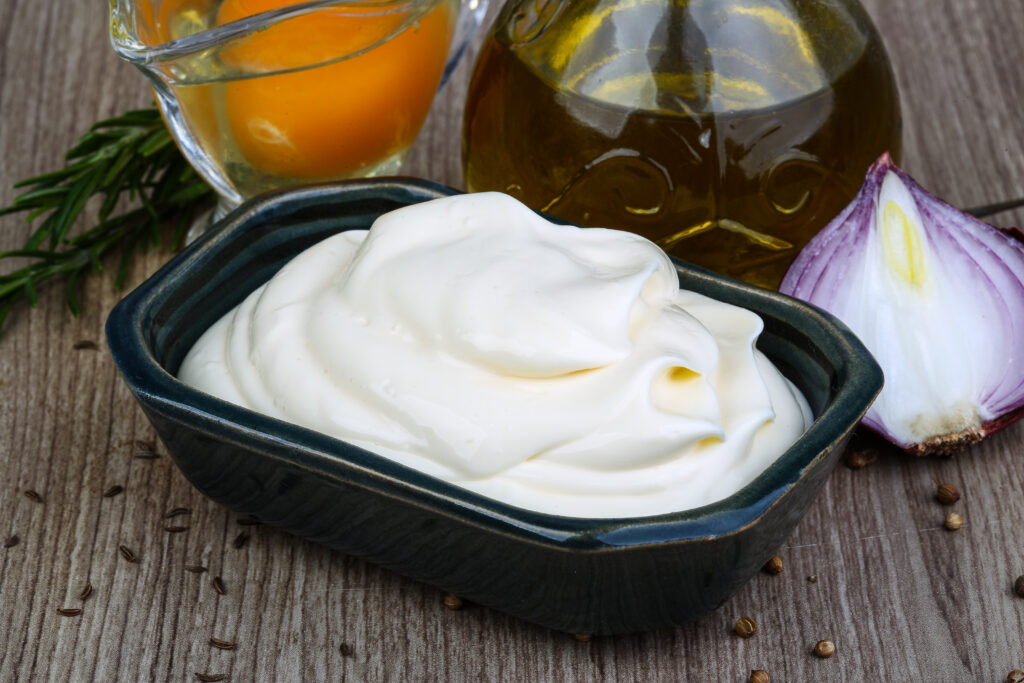
Mayonnaise: The Creamy All-Purpose Sauce
Mayonnaise, often called "mayo," is a thick, creamy emulsion of oil, egg yolks, and an acid like vinegar or lemon juice. It is one of the most versatile condiments in the world, serving as a base for many sauces, dressings, and dips. Its rich texture and tangy flavour have made it a staple in kitchens worldwide.
Chef Abdul, known for his expertise in creating perfectly balanced sauces, describes mayonnaise as “a culinary canvas—simple yet transformative, with endless possibilities for personalization.”
History of Mayonnaise
The origins of mayonnaise are debated, but many culinary historians attribute its invention to the French in the mid-18th century. The name is believed to derive from “Mahón,” a city in Spain, where the sauce was supposedly created after the French captured the city.
Mayonnaise gained prominence in French haute cuisine and quickly spread throughout Europe. The 20th century saw the advent of commercially prepared mayonnaise, turning it into a household staple.
Chef Abdul emphasizes, “Understanding the history of mayonnaise helps us appreciate how a simple emulsion became a global culinary essential.”
Ingrediants
- 2 large egg yolks
- 1 teaspoon Dijon mustard
- 1 tablespoon white wine vinegar or lemon juice
- 1 cup neutral oil (like canola, sunflower, or grapeseed oil)
- ½ teaspoon salt (to taste)
- Optional: A pinch of sugar or white pepper for added flavour
Instructions:
- Prepare Ingredients:
- Ensure all ingredients are at room temperature for easier emulsification.
- Whisk the Base:
- In a medium bowl, whisk together the egg yolks, mustard, vinegar, or lemon juice until smooth and well combined.
- Add Oil Gradually:
- While whisking continuously, slowly drizzle in the oil. Start with a few drops at a time to ensure the emulsion forms before adding more.
- Adjust Consistency:
- Once the mayonnaise thickens, you can add the oil more quickly. If it becomes too thick, thin it with a few drops of water or additional vinegar.
- Season to Taste:
- Stir in salt and any optional flavourings, adjusting to your preference.
Chef Abdul advises, “Patience is key. Adding the oil slowly ensures a stable emulsion, creating creamy and perfectly textured mayonnaise.”
Uses of Mayonnaise
As a Condiment:
- Spread on sandwiches, burgers, and wraps.
- Serve as a dip for fries, vegetables, or seafood.
As a Base for Other Sauces:
- Aioli: Add minced garlic for a Mediterranean touch.
- Tartar Sauce: Mix with chopped pickles, capers, and lemon juice for seafood.
- Rémoulade: Blend with mustard, herbs, and chopped pickles.
- Thousand Island Dressing: Combine with ketchup, pickle relish, and a splash of vinegar.
- Ranch Dressing: Mix with buttermilk, garlic, and herbs.
In Cooking:
- Salads: Use potato salad, coleslaw, or chicken salad as a dressing base.
- Baking: Incorporate into cakes or muffins for extra moisture.
- Marinades: Combine with spices for marinating chicken or fish.
- Glazes: Brush on proteins like salmon for a flavourful crust.
Chef Abdul remarks, “Mayonnaise’s versatility makes it indispensable, whether it’s elevating a simple sandwich or acting as the base for complex sauces.”
Tips for Perfect Mayonnaise
- Use Neutral Oil: Avoid strong-flavoured oils (like extra virgin olive oil) as they can overpower the flavour.
- Room Temperature Ingredients: Ensures proper emulsification.
- Whisk or Blend: For beginners, a food processor or immersion blender can help achieve a stable emulsion more easily.
- Fix Broken Mayo: If the emulsion breaks, start with a new egg yolk and gradually whisk in the broken mixture.
- Flavour Variations: Experiment with herbs, spices, or flavoured oils for custom mayonnaise.
Chef Abdul adds, “A broken mayonnaise can be saved—always have an extra egg yolk ready to bring it back to life.”
Storage and Shelf Life
- Homemade Mayonnaise: Store in an airtight container in the refrigerator for 3–5 days. For safety, always use fresh eggs.
- Commercial Mayonnaise: Once opened, refrigerate and use within the date printed on the packaging.
Common Variations
- Garlic Mayonnaise (Aioli): Add finely minced garlic or garlic paste.
- Spicy Mayonnaise: Mix in sriracha, cayenne pepper, or chilli flakes.
- Herb Mayonnaise: Blend with fresh herbs like parsley, dill, or basil.
- Lemon Mayonnaise: Add extra lemon zest and juice for a tangier flavour.
- Truffle Mayonnaise: Stir in truffle oil for a gourmet touch.
Why Mayonnaise is a Culinary Essential
Mayonnaise is more than just a spread; it’s a foundational ingredient in countless dishes. Its ability to enhance flavours, add moisture, and provide a creamy texture makes it indispensable in the kitchen.
Chef Abdul highlights, “Mastering homemade mayonnaise allows you to experiment with flavours and create a fresher, richer, and tailored to your taste.”
From classic aioli to indulgent truffle mayo, this simple emulsion unlocks a world of culinary creativity. How do you like to use mayonnaise? Share your ideas in the comments below!

